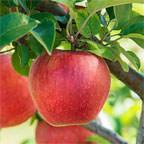Q.I Had A Variety Of Colors In The Mandevilla – Yellow Pink And Red- I Had To Buy More Soil So Temporarily Planted The Red W The Yel
low. Well- my reds turned pink in less than 2 days. But the reds that I planted alone in that same soil but alone remained red. Is this normal? All the colors are beautiful but I thought this was a change that happened very quickly.
- A.
This one is tricky. They aren't known to change color by being near others of different colors like some plants. This leaves a few physical factors. Slight differences in sunlight is enough to do this. I don't know if they are receiving the same amount of light or not, but this can be a cause. Another is the possibility of a mislabeled plant. This is not too common, but does happen. Many pink cultivars can resemble reds when the bloom is young, but they will fade to pink once they mature. Least likely is a freak mutation. This is very uncommon, but it does occur on occasion.
Was this answer useful?00



